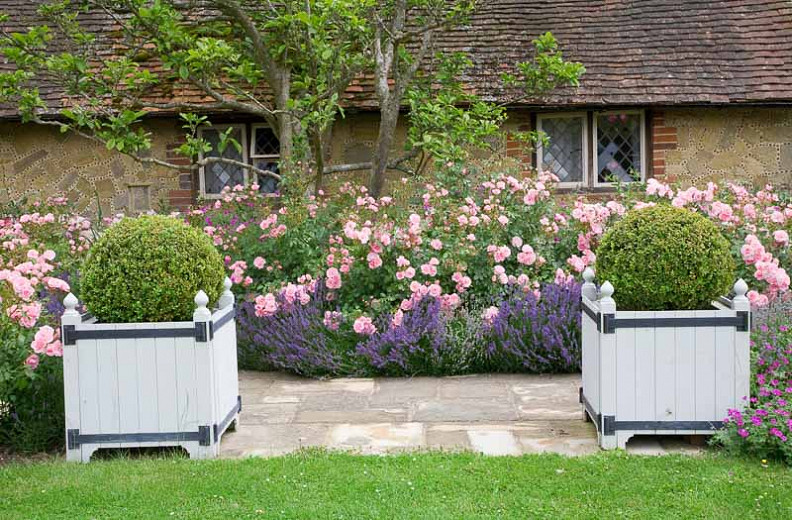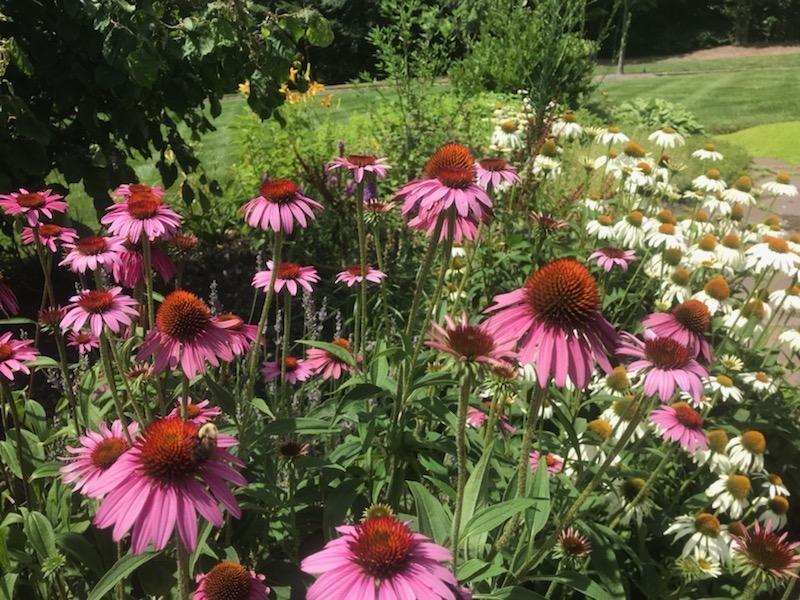The Ultimate Guide To Companion Planting In Your Garden
The Ultimate Guide to Companion Planting in Your Garden
Introduction
Companion planting is a gardening practice that involves planting certain plants together to benefit each other. This can be done to attract beneficial insects, repel pests, improve flavor, or improve soil health.
There are many different companion planting combinations that can be used, and the best combinations will vary depending on your specific garden conditions. However, there are some general principles that can be followed to create successful companion plantings.
In this guide, we will discuss the basics of companion planting, as well as some specific companion planting combinations that you can try in your own garden.
What is Companion Planting?
Companion planting is a gardening practice that involves planting certain plants together to benefit each other. This can be done in a variety of ways, including:
- Planting plants that attract beneficial insects, such as ladybugs and lacewings, to help control pests.
- Planting plants that repel pests, such as marigolds and mint, to keep them away from your crops.
- Planting plants that improve the flavor of each other, such as tomatoes and basil.
- Planting plants that improve soil health, such as beans and peas, which fix nitrogen in the soil.
The Benefits of Companion Planting
There are many benefits to companion planting, including:
- Increased crop yields
- Improved flavor
- Reduced pest problems
- Improved soil health
- Reduced need for pesticides
How to Choose Companion Plants
When choosing companion plants, there are a few things to keep in mind:
- The plants' growth habits. Some plants, such as tomatoes, grow tall and need support, while others, such as lettuce, grow low and spread out. It's important to choose plants that will complement each other's growth habits.
- The plants' requirements for sunlight, water, and nutrients. Make sure to choose plants that have similar requirements so that they will not compete with each other for resources.
- The plants' pest and disease resistance. Some plants are more resistant to pests and diseases than others. It's a good idea to choose companion plants that have different pest and disease resistances so that if one plant is affected, the others will not be as susceptible.
Some Popular Companion Planting Combinations
Here are some popular companion planting combinations that you can try in your own garden:
- Beans and peas: Beans and peas fix nitrogen in the soil, which can benefit other plants in the garden. They also help to suppress weeds.
- Carrots and onions: Carrots and onions have different pests and diseases, so they can help to protect each other. They also help to improve the flavor of each other.
- Cucumbers and tomatoes: Cucumbers and tomatoes attract different pollinators, so they can help to improve pollination. They also help to shade each other from the sun.
- Lettuce and chives: Lettuce and chives have different root systems, so they do not compete for resources. They also help to repel pests.
- Marigolds and tomatoes: Marigolds repel nematodes, which can damage tomatoes. They also help to attract pollinators.
Conclusion
Companion planting is a great way to improve the health and productivity of your garden. By planting certain plants together, you can attract beneficial insects, repel pests, improve flavor, and improve soil health.
If you are new to companion planting, start by trying a few of the popular combinations listed above. As you gain more experience, you can experiment with different combinations to find what works best for your garden.
Plants to Plant Together in the Garden
When it comes to gardening, there are a few things that you need to know in order to create a thriving and beautiful space. One of the most important things to consider is companion planting. Companion planting is the practice of planting certain types of plants together in order to benefit each other. For example, some plants can help to repel pests, while others can help to improve the flavor of fruits and vegetables.
If you're interested in learning more about companion planting, I recommend visiting Gardenia Inspiration. This website has a comprehensive guide to companion planting, as well as a list of specific plant pairings that have been shown to be beneficial.
In addition to providing information about companion planting, Gardenia Inspiration also offers a variety of other resources for gardeners, including gardening tips, recipes, and plant profiles. Whether you're a beginner or a seasoned gardener, you're sure to find something useful on this website.
FAQ of plants to plant together in garden
5 Most Frequently Asked Questions About Plants to Plant Together in the Garden
1. What are the benefits of planting plants together?
There are many benefits to planting plants together. Some of the most common benefits include:
- Attracting pollinators: Many plants attract pollinators, such as bees, butterflies, and hummingbirds. These pollinators help to pollinate other plants in the garden, which can lead to a more bountiful harvest.
- Disguising pests: Some plants can help to disguise pests from other plants. For example, planting marigolds near tomatoes can help to deter tomato hornworms.
- Providing shade and support: Some plants can provide shade and support for other plants. For example, planting sunflowers near shorter plants can provide them with shade, while planting peas near taller plants can provide them with support.
- Creating a more visually appealing garden: Planting plants together that have complementary colors, textures, or shapes can create a more visually appealing garden.
2. How do I choose plants that will grow well together?
When choosing plants to plant together, there are a few factors to consider:
- Sunlight requirements: Make sure to choose plants that have similar sunlight requirements. For example, you wouldn't want to plant a shade-loving plant next to a sun-loving plant.
- Watering needs: Also consider the plants' watering needs. You don't want to plant a plant that needs a lot of water next to a plant that is drought-tolerant.
- Soil type: Make sure to choose plants that will do well in the type of soil you have. For example, you wouldn't want to plant a plant that prefers sandy soil next to a plant that prefers clay soil.
- Pest and disease resistance: Consider the plants' pest and disease resistance. You don't want to plant two plants together that are susceptible to the same pests or diseases.
3. What are some popular combinations of plants to plant together?
Here are some popular combinations of plants to plant together:
- Marigolds and tomatoes: Marigolds help to deter tomato hornworms, which are a common pest of tomatoes.
- Nasturtiums and beans: Nasturtiums help to attract beneficial insects, such as ladybugs, which help to control pests.
- Sunflowers and peas: Sunflowers provide shade for peas, which helps to keep them cool and prevent them from bolting.
- Coneflowers and lavender: Coneflowers and lavender have complementary colors and textures, which can create a visually appealing garden.
- Petunias and geraniums: Petunias and geraniums are both easy-to-grow annuals that come in a variety of colors, making them a popular choice for container gardens.
4. How far apart should I plant plants together?
The amount of space you need to plant plants together will vary depending on the size of the plants. However, as a general rule of thumb, you should plant plants about 1-2 feet apart. This will give them enough space to grow and thrive.
5. What are some tips for planting plants together?
Here are some tips for planting plants together:
- Start by planning your garden. Decide what types of plants you want to include in your garden and where you want to plant them.
- Consider the plants' size and growth habits. Make sure to plant plants that will not outgrow each other.
- Plant the plants at the correct depth. The depth at which you plant a plant will vary depending on the type of plant.
- Water the plants well after planting. This will help them to get established.
- Fertilize the plants regularly. This will help them to grow and thrive.
Image of plants to plant together in garden
- Lavender and roses: These two classic garden flowers are a beautiful combination that attracts bees and butterflies. Lavender's silvery foliage and rose's lush blooms make a stunning contrast.

- Coneflowers and rudbeckias: These two daisy-like flowers come in a wide range of colors, so you can create a colorful and vibrant garden bed. They also attract butterflies and other pollinators.

- Zinnias and marigolds: These two annuals are a great choice for a summer garden. They come in a variety of colors and are easy to care for. Zinnias attract butterflies, while marigolds help to repel pests.

- Hostas and ferns: These two shade-loving plants are a great way to add depth and texture to your garden. Hostas come in a variety of leaf shapes and colors, while ferns add a delicate touch.

- Sage and thyme: These two herbs are a great addition to any herb garden. They both have a strong aroma that deters pests, and they can be used in cooking.

Post a Comment for "The Ultimate Guide To Companion Planting In Your Garden"